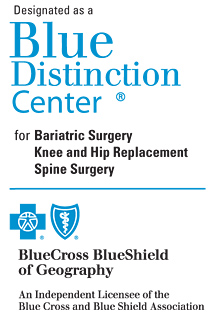Hip Replacement Options
Hip pain or disability can result from a broken bone due to an accident or fall, or it can progress over time due to arthritis caused by daily wear and tear on your joints and bones. Other conditions — such as bone deformities or infection — can also cause joint damage.
Hip replacement — also called hip arthroplasty — may be the right solution if your pain doesn't respond to nonsurgical treatments. This surgical procedure replaces a painful, worn out or damaged hip joint with a prosthesis, or artificial joint. It can be a complete — or total — hip replacement or a partial replacement, which replaces only the most damaged part of your hip.
More than 250,000 hip replacements are performed in the U.S. each year. The orthopedic team at El Camino Health has extensive experience with various types of implants, materials and procedures. We perform more than 975 joint replacements annually, including more than 350 hip replacements. Our expertise in hip and knee replacement and hip fracture surgery earned the Gold Seal of Approval® from The Joint Commission. Both campuses are recognized for Knee and Hip Replacement by Anthem Blue Cross and Blue Shield of California, earning designation as a Blue Distinction Center®.
A hip procedure may involve treating or replacing parts of the hip that affect joint function such as protective cartilage, tendons, ligaments and bone, including the femur (upper thigh) and acetabulum — a cup-like socket holding the top, or head, of the femur.
Our orthopedic surgeons have advanced expertise in anterior hip replacement and other less invasive options, which can result in faster recovery with less pain. Our experts perform more than 250 anterior hip replacements each year, as well as other approaches that are less invasive than traditional hip surgery.
Treatment
Your doctor will discuss all your treatment options with you and help you determine what’s best for you. If your hip pain is due to an injury, you may require immediate surgery. If it's due to degenerative arthritis or age-related wear and tear, nonsurgical treatments are typically considered first.
Nonsurgical options include:
- Medications, including analgesic (anti-pain) and anti-inflammatory drugs.
- Supplements, such as glucosamine and chondroitin sulfate.
- Modifications to your home, work or lifestyle, including restriction of painful activities.
- Assistive walking devices, such as a cane, crutches or a walker.
- Physical or occupational therapy.
If nonsurgical measures don't relieve your pain, surgical measures may help. El Camino Health offers a range of surgical options.
Hip Replacement Surgery
Traditional hip replacement involves open surgery, performed under anesthesia. To access your hip joint, your surgeon makes an incision, which is several inches long, over the joint. Reaching the joint requires using various surgical tools and instruments to separate muscle and tissue. The surgeon then removes damaged joint, bone and tissue, and implants an artificial joint with other structural materials.
Minimally Invasive Hip Arthroscopy
Your doctor may recommend hip arthroscopy if joint damage is less advanced and doesn't require a total joint replacement. During arthroscopy, your surgeon makes small incisions and inserts an arthroscope — a lighted, pencil-thin instrument with a magnifying lens and miniature camera — to view the inside of the joint. Your doctor may use specialized instruments to remove bone and cartilage or repair damage to tendons, ligaments or cartilage, including tears, injury or wear. In some instances, hip arthroscopy can delay total hip replacement surgery for people in the early stages of hip arthritis.
Mako Robotic Total Hip Replacement
Our team is proud to offer the latest technology in hip replacement procedures – the Mako Robotic-Arm Assisted Total Hip Replacement. Designed for those with arthritis and joint degeneration in the hip, Mako system technology allows us to completely customize your surgical plan to fit your anatomy. To do this, we begin by taking a computerized tomography (CT) scan of your hip. Then, we upload the image to the Mako system software, which creates a 3D model of your hip. Our expert team then uses this 3D model to create your completely customized surgical plan, which allows us to create a more precise result in your total hip replacement.
Anterior Hip Replacement
The anterior (front) approach to hip replacement is an advanced procedure that offers a less invasive option to the more common posterior (back) approach. Orthopedic surgeons at El Camino Health have high-level skills and extensive experience in performing this advanced approach. By using a more direct approach from the front, surgeons can protect healthy muscle and other tissues. Smaller incisions and less trauma to surrounding tissues means this approach can offer less pain and scarring and a faster recovery.
Anterior hip replacement offers many benefits without the typical post-surgery movement restrictions — such as avoiding low chairs or not crossing your legs — and other precautions required by other hip replacement approaches. Most people have full muscle function and are able to move around freely immediately after anterior hip replacement. Other benefits of this approach include a lower risk of post-surgery hip dislocation.



